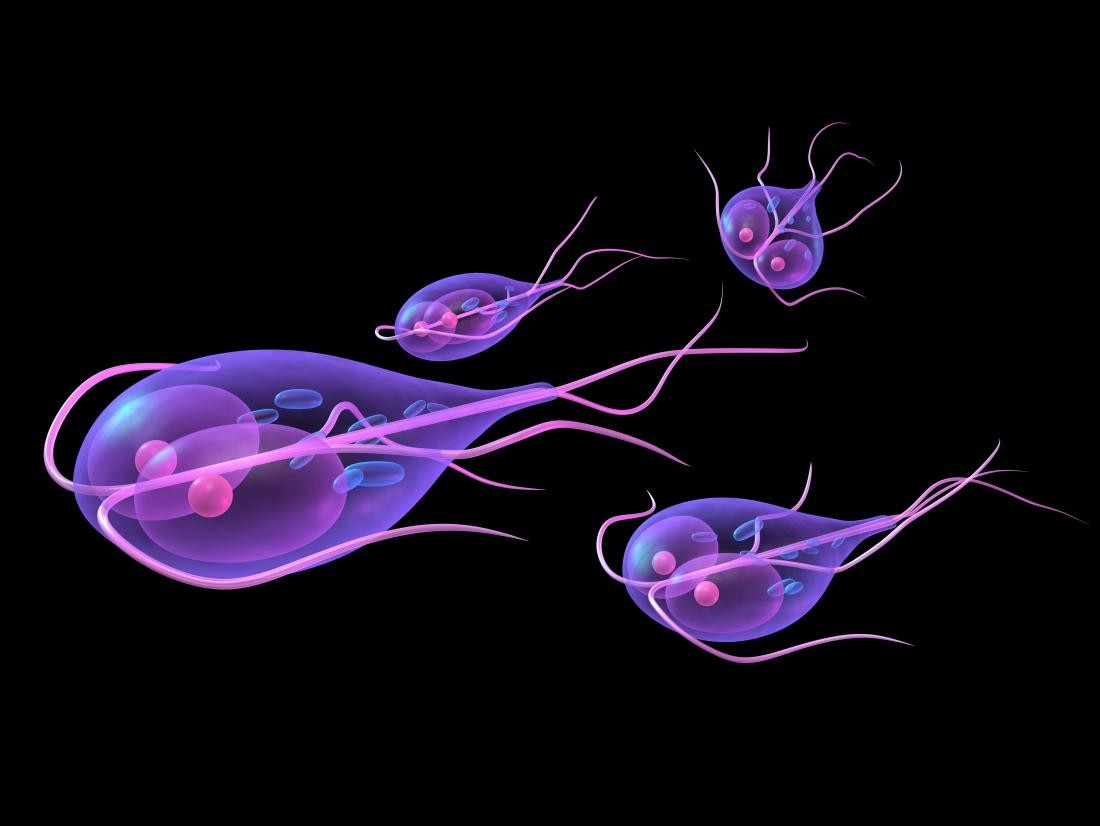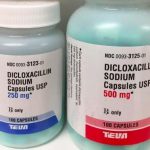
Contents
Giardiasis (Giardia Lamblia)
Giardiasis is an infection of the small intestine caused by the parasite Giardia duodenalis, also known as Giardia lamblia and Giardia intestinalis. It is the most common cause of parasitic gastrointestinal disease, with an estimated 20,000 cases occurring each year in the U.S. and a 20% to 40% prevalence worldwide.
- Giardia lamblia exists in two forms: an active trophozoite and an inactive cyst. The trophozoite attaches to the small intestine lining and causes the signs and symptoms of giardiasis.
- The trophozoite cannot survive outside the body, while the cyst can exist for prolonged periods.
- When ingested, stomach acid activates the cyst and it develops into the disease-causing trophozoite. Ingesting only ten cysts can cause infection. Trophozoites are not only responsible for the symptoms of giardiasis, but they also produce cysts that spread the infection through feces contamination.
- Infected individuals excrete cysts in their feces, which can contaminate food and water sources. Freshwater lakes and streams are common reservoirs for cysts, making giardiasis the most common cause of water-borne parasitic illness in the U.S.
- Domestic and wild mammals can become infected with Giardia, though the extent of transmission to humans is unclear.
- Giardiasis outbreaks have occurred in recreational water sources like swimming pools and water parks, likely due to infected users rather than contaminated water sources.
Who is at risk for giardiasis?
Inadequate sanitation and insufficient treatment of drinking water increase the risk of giardiasis. The infection is a common cause of diarrhea outbreaks in day-care centers, placing children, their families, and day-care workers at risk.
- Children are three times more likely to develop giardiasis than adults.
- Hikers who drink from contaminated freshwater lakes in back-country areas are also at risk. Infection can also occur through anal/oral sex.
What signs and symptoms does giardiasis cause?
The most common manifestations of giardiasis are diarrhea and abdominal pain, particularly cramping. However, not all patients experience diarrhea, as it occurs in 60%-90% of cases.
Other common manifestations include bloating, nausea (with or without vomiting), malaise, and fatigue. Fever is rare. Symptoms may range from mild or nonexistent to severe. Giardia interference with fat absorption can result in foul-smelling stools and weight loss.
Symptoms and signs of giardiasis typically start at least seven days following infection but can appear up to three weeks later. Most cases resolve within 2-4 weeks without treatment. However, untreated infection can persist for months or years, with continuing symptoms. Chronic infection may cause failure to thrive in children, and some patients develop postinfectious irritable bowel syndrome. The cause of persistent symptoms is not clear but may involve bacterial overgrowth in the small intestine.
IMAGES
Diagnosis of giardiasis
The most effective test for diagnosing giardiasis is antigen testing of stool samples, which can identify over 90% of infected individuals. Microscopic examination of stool for cysts or trophozoites also helps with diagnosis, although three stool samples may be necessary to detect 90% of cases. Microscopy allows for the identification of other parasites causing diarrhea, providing additional diagnostic value.
Duodenal fluid collection, small intestine biopsies, and the string test (swallowing a string with a capsule that collects fluid) are alternative diagnostic methods that can be costly and uncomfortable.
What is the treatment for giardiasis?
The primary treatment for giardiasis is metronidazole (Flagyl) for 5-10 days, with an efficacy rate of 75%-100%. However, it often produces gastrointestinal side effects, including nausea, metallic taste, dizziness, and headache. Despite its effectiveness, metronidazole is not FDA-approved for giardiasis treatment.
Tinidazole has replaced furazolidone as the FDA-approved drug and has a high (>90%) efficacy rate with a single dose and good tolerability. Furazolidone, Quinacrine, Albendazole, and Mebendazole are effective alternative agents but are not approved for use in the U.S. Paromomycin is less effective.
In cases of treatment failure, switching medications, increasing the dose or duration, or using combination therapy (e.g., quinacrine and metronidazole) may be necessary.
Is it possible to prevent giardiasis?
- Drink only water from established treatment facilities.
- If the adequacy of water treatment is uncertain, boil or filter the water with a pore size appropriate for removing cysts and bacteria.
- Avoid drinking water from untreated freshwater sources.
- Avoid consuming ice or beverages made from potentially contaminated tap water.
- Avoid brushing teeth with tap water that may be contaminated.
- Avoid consuming uncooked or unpeeled fruits and vegetables grown in conditions that may lead to Giardia contamination.
- Wash hands before eating, after changing diapers or using the bathroom, and after touching pets.
- Avoid oral/anal sex.


